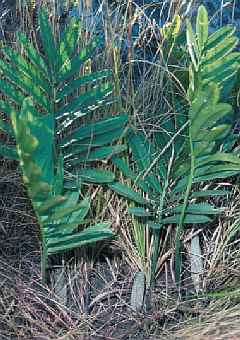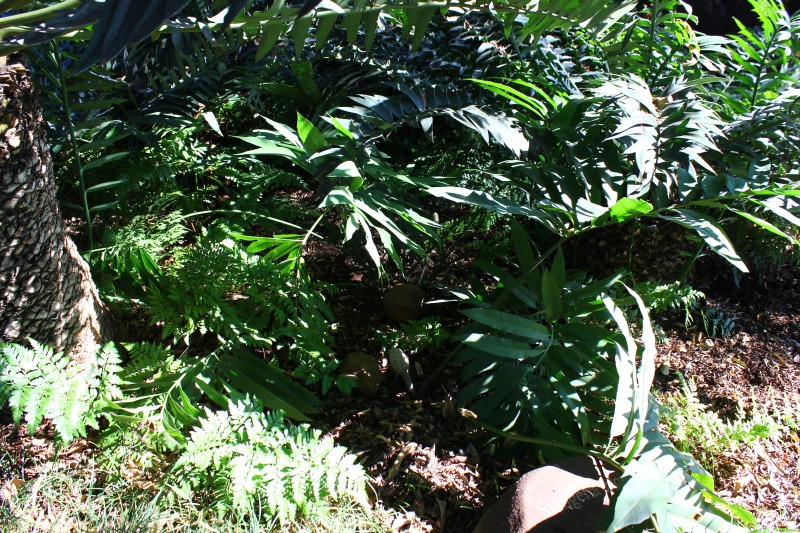Etymology:
From the Greek prefix erio-, woolly, and suffix -pus, footed, referring the the woolly petiole bases.


Vernacular:
fingo, hottentot's head
Description:
Stem subterranean and tuber-like.
Cataphylls absent.
Leaves 0.3-2 m long, bright to dark green, dull, fern-like (with an erect petiole and arching rachis to give a horizontal leaf blade), pinnate; petiole round, spine-free, 10-80 cm long.
Leaflets 20-100, soft but somewhat coriaceous, lanceolate to oblong, acute or rounded, entire, dentate or lobed, 8-40 cm long, 1.5-5 cm wide.
Pollen cones solitary, long-pedunculate, cylindrical, grey to light yellow, 10-25 cm long, 3-4 cm diam.
Seed cones solitary, long-pedunculate, ovoid, grey to light yellow, 8-30 cm long, 6-10 cm diam.
Seeds ovoid, 30-35 mm long, 20-25 mm diam,; sarcotesta purple-red
Distinguishing features:
The pinnately veined, fern like leaves immediately distinguish Stangeria from all other cycads.
Distribution and habitat:
Widespread on the east coast of South Africa and southern Mozambique, in various habitats from grassland to closed forest, usually within a few kilometres of the ocean.
Conservation status:
Not considered to be at risk, although under considerable pressure from traditional herbalists. 1997 IUCN Red List of Threatened Plants category R.
Historical notes:
Although collected early in the 19th Century, it was many years before this unusual plant was recognised as a cycad. The early sterile collections were identified as ferns, firstly as Lomaria coriacea. It was next described by German botanist Otto Kunze as new species of fern, Lomaria eriopus in 1829. It was only recognised as a cycad in 1851, when a plant collected by Dr Stanger produced a cone in Chelsea Physic garden in London, caused some consternation. It was promptly described as a new cycad genus by English botanist T Moore, who also gave in a new specific epithet paradoxa, a reference to the confusion with ferns. This was inadmissable under the rules of botanical nomenclature, and the correct combination of Stangeria eriopus was made By French botanist Henri Baillon in 1892 (and again by English botanist George Nash in 1909, apparently unaware of the earlier publication).
Reference: The Cycad Pages


